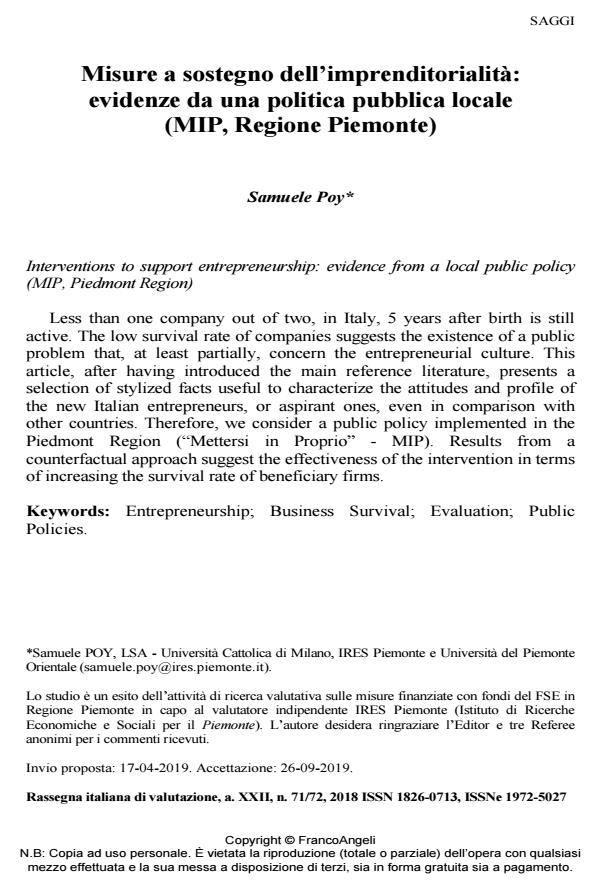Interventions to support entrepreneurship: evidence from a local public policy (MIP, Piedmont Region)
Journal title RIV Rassegna Italiana di Valutazione
Author/s Samuele Poy
Publishing Year 2019 Issue 2018/71-72
Language Italian Pages 26 P. 56-81 File size 524 KB
DOI 10.3280/RIV2018-071004
DOI is like a bar code for intellectual property: to have more infomation
click here
Below, you can see the article first page
If you want to buy this article in PDF format, you can do it, following the instructions to buy download credits

FrancoAngeli is member of Publishers International Linking Association, Inc (PILA), a not-for-profit association which run the CrossRef service enabling links to and from online scholarly content.
Less than one company out of two, in Italy, 5 years after birth is still active. The low survival rate of companies suggests the existence of a public problem that, at least partially, concern the entrepreneurial culture. This article, after having introduced the main reference literature, presents a selection of stylized facts useful to characterize the attitudes and profile of the new Italian entrepreneurs, or aspirant ones, even in comparison with other countries. Therefore, we consider a public policy implemented in the Piedmont Region ("Mettersi in Proprio" - MIP). Results from a counterfactual approach suggest the effectiveness of the intervention in terms of increasing the survival rate of beneficiary firms.
Keywords: Entrepreneurship; Business Survival; Evaluation; Public Policies.
Samuele Poy, Misure a sostegno dell’imprenditorialità: evidenze da una politica pubblica locale (MIP, Regione Piemonte) in "RIV Rassegna Italiana di Valutazione" 71-72/2018, pp 56-81, DOI: 10.3280/RIV2018-071004